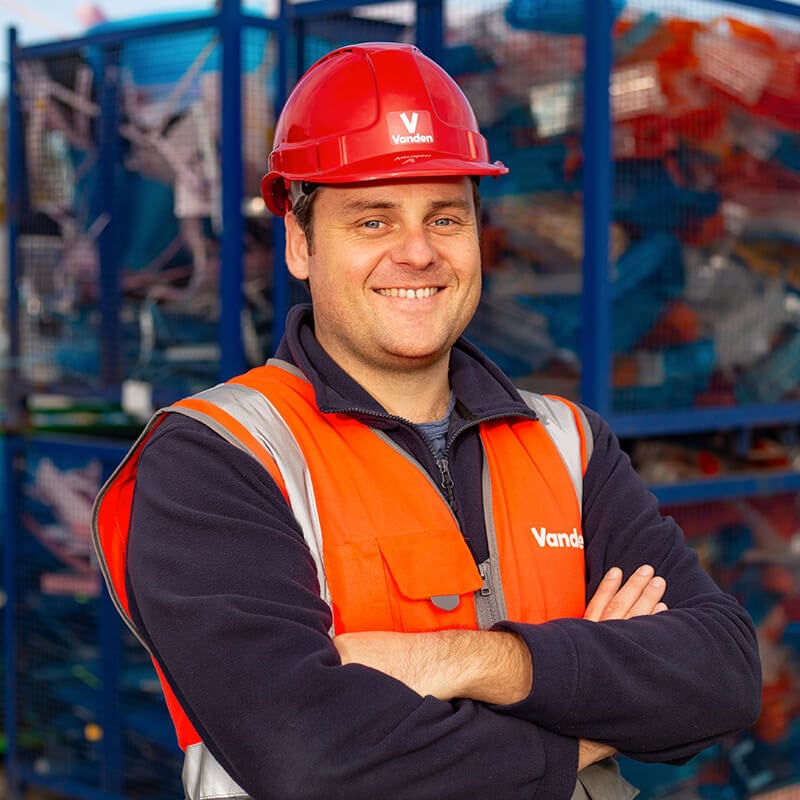We have previously discussed the steps that Vanden take to ensure we are producing the purest recycled plastic.
In this article we deliver the actions firms can implement to make their plastic scrap, offcuts and end of life stock more recyclable, securing another revenue stream and creating closed-loop supply chains.
We will also explore the work that is being done to increase the recyclability of known issues, such as mixed polymer packaging and unrecyclable material.
What is being done to increase the recyclability of polymers?
While primary work is being carried out to improve the recyclability of polymers, our recycling infrastructure is being reviewed and improved.
What about plastic packaging?
Few of us are aware of just how technically complex plastic packaging can be.
Often comprised of numerous layers, each one plays a specific role in the structure, barrier and aesthetics of an item of packaging. The use of various polymers and adhesives complicates the recycling process. To combat this issue, work is underway to create polymers that can offer multiple functions to reduce the use of mixed plastic leading to an increase in recyclability.
Here are the strategies you can implement to make your product more recyclable
Now is the time for businesses and brands to execute the processes and strategies that will ensure the polymers they are handling are reprocessed and re-enter the supply chain. Creating circular economies is not only great for the environment, but also great for your brand image and profits.
In order to ensure your scrap plastic, redundant plastic items and end-of-life stock provides another revenue stream and contributes to a circular economy - there are ways that you can secure its recyclability and increase its value.
Segregation at source
The separation of mixed polymer streams is a known challenge.
The most efficient way of maximising recovery of production scrap from any form of manufacturing, is to implement strategies to separate by polymer type at the point at which scrap is generated.
Once conflicting polymer types are mixed, the cost required to separate these later almost always outweighs the cost of the right solution being deployed at the beginning of the process.
Simple (and consistent) product identification
Designing products with clear identification in a uniformed manner to educate the consumer to segregate responsibly.
Design with a focus on end of life
A product made to be recycled and labelled as such will enhance a brand’s sustainability credentials.
For example, bright shiny pouches made with multiple polymers for food packaging may stand out on the supermarket shelf, but when the consumer has finished with it (even it is clean) the only options may be landfill or waste to energy.
Avoid single use
We see examples every day of plastic products which are being disposed of after a single use, when they could be used multiple times.
The service industry should invest in new supply chain solutions to reuse buckets, trays, totes and a wide range of other products which are currently being disposed for no good reason.
At Vanden, we take great pride in our ability to offer expert training, guidance and education. We empower and enable our customers to ensure they are creating products that can re-enter the supply chain and contribute towards building sustainable and circular economies.
Alternative uses for unrecyclable plastics
Polymers that are difficult to separate because they are laminated, present a formidable challenge when it comes to mechanical recycling.
One solution is to divert these materials, along with items that are heavily soiled or contaminated from ending up in landfill, is to use them in the production of energy. Energy recovery facilities converts these items into power for homes and businesses. In fact, the American Chemistry Council has predicted that if we diverted the items that go to landfill to energy recovery facilities instead, 14 million homes could be powered every year. Energy recovery reduces greenhouse emissions because it reduces the need to burn fossil fuels for energy production.
However, there are concerns over the emissions produced by this energy recovery. These emissions include particulates, total organic carbon, hydrogen chloride, carbon monoxide, sulphur dioxide and nitrogen oxides. A report issued last year titled, ‘Evaluation of the climate change impacts of waste incineration in the United Kingdom’ stated that each tonne of plastic incinerated in 2017 resulted in 1.43 tonnes of CO2.
The report goes on to state that even when you consider the electricity generated as a result of the plastic incineration, the process releases around 1.6 million tonnes more CO2 than sending the waste to landfill. It also found that the energy produced by these means was 23 times more carbon intense than energy produced from sources such as win or solar power.
However, the findings in this report were contested by the Energy from Waste (EfW) sector described as ‘deeply flawed’, The EfW sector accused the report of overlooking other aspects of landfill, such as water course pollution and the emission of methane. Methane is considered to be a more harmful emission than CO2 in the short term.
In conclusion
There are many positive outcomes in deciding to make a conscious and consistent effort to recycle your plastic scrap. By working with a dedicated, licensed and expert plastic recycling firm, you can ensure that your plastic offcuts, trimmings and end-of-life stock provide the highest return, while you benefit from a timely, reliable and added - value service.
If you would like to discuss further, how Vanden Recycling can aid you in benefitting from recycling your plastic scrap, contact us today.






Tell us what you think...